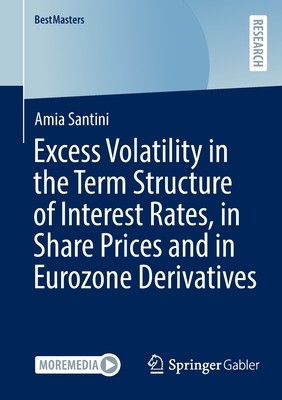
- We will send in 10–14 business days.
- Author: Amia Santini
- Publisher: Springer Gabler
- ISBN-10: 3658374497
- ISBN-13: 9783658374495
- Format: 14.8 x 21 x 0.5 cm, softcover
- Language: English
- SAVE -10% with code: EXTRA
Excess Volatility in the Term Structure of Interest Rates, in Share Prices and in Eurozone Derivatives (e-book) (used book) | bookbook.eu
Reviews
Description
The phenomenon of excess volatility in the context of share prices and of the term structure of interest rates has been documented by the existing literature, highlighting the limitations of traditional models of rational expectations and of reliance on the efficient market hypothesis. The data violates the bounds on volatility that are derived from them. Amia Santini studies the possible shortcomings of the methodologies used to uncover those inconsistencies, and the potential explanations of the observed phenomenon that can be considered in line with the rational expectation framework. She focuses on a relatively newer field of study: derivative instruments. Previous results of excess volatility, recovered with a worldwide focus, are presented and an empirical analysis is performed to assess whether a similar outcome would be obtained in the Eurozone market. The exploration of financial information that falls underneath the risk-neutral measure, such as derivative prices, reduces the importance of time-varying discount rates as a potential explanation of excess volatility. In fact, the martingale measure already incorporates all potential variation in risk premia, which is the main driver of changes in discount rates. This opens the door to different and innovative prospects, and specific attention is paid to a new model for investor behaviour, that of natural expectations.
EXTRA 10 % discount with code: EXTRA
The promotion ends in 21d.00:38:57
The discount code is valid when purchasing from 10 €. Discounts do not stack.
- Author: Amia Santini
- Publisher: Springer Gabler
- ISBN-10: 3658374497
- ISBN-13: 9783658374495
- Format: 14.8 x 21 x 0.5 cm, softcover
- Language: English English
The phenomenon of excess volatility in the context of share prices and of the term structure of interest rates has been documented by the existing literature, highlighting the limitations of traditional models of rational expectations and of reliance on the efficient market hypothesis. The data violates the bounds on volatility that are derived from them. Amia Santini studies the possible shortcomings of the methodologies used to uncover those inconsistencies, and the potential explanations of the observed phenomenon that can be considered in line with the rational expectation framework. She focuses on a relatively newer field of study: derivative instruments. Previous results of excess volatility, recovered with a worldwide focus, are presented and an empirical analysis is performed to assess whether a similar outcome would be obtained in the Eurozone market. The exploration of financial information that falls underneath the risk-neutral measure, such as derivative prices, reduces the importance of time-varying discount rates as a potential explanation of excess volatility. In fact, the martingale measure already incorporates all potential variation in risk premia, which is the main driver of changes in discount rates. This opens the door to different and innovative prospects, and specific attention is paid to a new model for investor behaviour, that of natural expectations.


Reviews